All about the 32DIS Carburettor
contributed by Michael Tierney and Ian Simpson
Functionality, servicing and upgrade.
Index:
Functionality
The 18 Turbo
The 5GTT
Servicing
General parts
Service kits, inc gaskets and diaphragms
Upgrade
The Group A carb
Original Group A parts
The bored out standard carb
Carb setup and helpful anecdotes
Further reading
Changing the Carburettor jets
Service the Solex 32DIS Carburettor
Functionality
Enrichment circuits
Enrichment takes place when the manifold vacuum decreases also and/or when the float chamber pressure rises.
The carb has what is called 'conventional full load enrichment' plus 2nd and 3rd stage enrichment for when turbo boost brings about an increase in fuel pressure in the float chamber.
The 18 Turbo
Uses the 32dis mark 752 carburettor.
The conventional enrichment circuit is kept closed by engine vacuum. The valve is a small spring pushing a small ball to close a hole, and a diaphragm held back against a bigger spring by the vacuum, sourced from an an opening at the base of the carb just below the throttle. When the vacuum nears atmospheric pressure the spring pushes the diaphragm and ball back and fuel flows through the hole to jet E0 (often called the removable jet, see photo, and marked 100(1mm dia.)) and then on to the emulsion tube.
2nd stage occurs when the float chamber pressure increases to approx 180 millibars (2.6psi). Fuel pressure on the diaphragm overcomes atmospheric (from the 'tube that goes to nowhere') and spring pressure to allow a small ball valve to lift and fuel flows through E1 and jet E2 (often called the fixed jet and located in the carb body) and then on to the emulsion tube via a separate a channel than for jet E0 from the 1st stage.
3rd stage occurs when float chamber pressure rises to over approx 450 millibars (6.6psi). The pressure diaphragm lifts the ball AND it's seat assembly so fuel flows around the valve and the E2 jet now meters final enrichment!
You can see now that increasing the size of E2 will compensate for higher boost pressures. Jet E2 is from 1.05-1.10mm
The 5GTT
Uses the 32DIS 854 and 931.
Standard jets are:
1.2mm main jet.
1.25mm air corrector.
1mm 1st stage enrichment jet.
1mm 2nd stage enrichment jet/bush.
0.45mm idle jet.
0.40mm accelerator pump jet.
1.7mm needle valve.
The 1st stage is as for the R18 Turbo, above.
But has a simplified version of the 2nd 3rd stage enrichment.
2nd stage is provided by pressure diaphragm being lifted slightly so moving a rubber O ring off the E1 hole, and at the same time drawing a brass rod into and therefore partially occluding E1 and allowing a small amount of fuel to flow through to the fixed jet E2.
3rd stage. As the fuel pressure rises further, the diaphragm and rod move further away from E1. The brass rod is sharply tapered to a much narrower diameter. As it moves, the rods thin end travels through E1 meaning the E1 hole is now more open and more fuel flows through to jet E2.
Servicing
General parts
7701 034 196 - Mixture screw £1.50
7701 033 843 - Bung for mixture screw tube £2
7701 017 580 - Needle valve
7701 033 690 - Idle jet (0.45mm)
7701 029 724 - Accelerator pump inlet non return ball valve
7701 032 152 - Accelerator Jet £15
0853 996 428 - Main jet (1.20mm) £2
7703 065 152 - O ring seal for carb to top plastic (or alloy) elbo £4.29
7701 026 392 - 1.35mm main jet £2.64; seems this number now leads to air/enrichment jets.
These numbers no longer refer to air/enrichment jets. It seems they have been re-allocated by renault to the following parts.
6001 007 416 7mm oil breather pipe restrictor.
6001 007 478 1.7mm oil breather pipe restrictor.
Main jets from Southern Carbs often stocked in a range of sizes at 0.05mm increments for £2.20 each.
Service kits, inc gaskets and diaphragms
There are three kits available, each have different various parts with some parts common to two kits or all. Fitting the kits is fairly easy to do for a methodical person with the right size screw drivers. Cleanliness is very important or the jets will block straight away.
They are available:
Now in the RTOC shop for £24.50inc VAT and delivery. Our kit INCLUDES the green throttle shaft seals and idle jet seal which the following ones don't. (May 2007)
Webcon won't usually sell direct but they have them "off the shelf" for £19.00 + VAT that's £23.48 inc + postage. Which is cheaper than tuners prices including postage.
From some 5GTT specialists such as K-tec for about £33 inc post. (March 2004)
From here: http://stores.ebay.co.uk/FAST-ROAD-CARS - Cheapest source I've found thus far. (Mart - Jan' 2007)
From Southern Carbs, 020 8540 2723, sales@southerncarbs.co.uk, Part number for the Solex 32DIS overhaul kit: 9611709200 for a similar price to Webcon.
Also, per Southern Carbs, 22MAR04, for the two green seals that go one on each end of the throttle shaft where it goes through the carb base use ones from the turbo version of the Webber DCOE (from the Lotus Esprit Turbo), Webcon (and Southern Carbs) part number: 4157502500 £1.87+VAT (=£2.197) each +p&p @ £1.50+VAT (=£1.76). £6.18 all in. Or check in yellow pages to find a local a seal manufacturer and get two 12mm by 8mm by 3mm seals that are unaffected by exposure to petrol and engine oil.
Upgrade
The Group A carb
I think refers to the R11 homologation. There are special parts for this carb, as listed below, that are not like any bored standard carb.
Original Group A parts
7711 067 239 - Transfer Tube £18
7711 067 240 - Auxillary (brass type) venturi £41
7711 067 241 - Main venturi (aka choke tube) £35
7711 067 242 - Main jet (1.50mm) £2
7711 067 243 - Enrichner jet (0.90mm) (also useable as air corrector) £3
7711 067 244 - Air Corrector (1.20mm) (also useable as enrichner) £3
The bored out standard carb
You can do away with the choke flap. You must plug the holes from it's spindle but leave the cam in place though as this will allow you to set the idle a bit higher during warm up by simply operating the choke control inside the car as per normal. It simply runs the engine faster without making it richer. I find this works well and the car drives better than with the choke on. You can also fettle away the metal step at the side of where the flap closed against in order to make a smoother flow.
You can remove the main venturi by pushing out the small metal bung at the bottom then pushing out the main vent.. Maybe carefully warming the body might help. I've heard that it can be done in situ with a hole cutter, but you might get swarf into the little hole at the rear of the middle of the venturi. Normally it would go in a lathe and be opened from the standard 25mm anywhere up to 28mm or more. Some people have experimented with larger bores and re-positioning the slopes of the venturi.
The 27.5 to 28mm bores have usually used with a 1.0mm or 0.9mm air corrector and 1.25 to 1.6mm main jet. Sometimes the removable enrichment jet is enlarged from 1.0mm to 1.1mm or more. Some tuners put the 1.25 from the air position there. That may be too large or may be fine. It's possibly best to instead, or also, drill the fixed jet. But again swarf could go inside the carb.
It is possible to make the fueling a bit richer, if needed, by grinding away the part of the plastic float that presses the needle valve in. This makes the fuel level in the float chamber a little higher. This leads to more fuel being picked up from the emulsion tube. Also removing the gauze filter from the inlet to the float chamber can help if you use high boost. And also using an enlarged needle valve.
The extent of enrichening seems to depend on how much boost is to be used (read how much power is to be made, as engine configuration changes can make more power from more fuel at the same boost). There is always the '5th' injector option. This is basically adding an independantly mapped electric fuel injector (or two or more) to the existing carb (or injection) setup in order to get the extra fuel in and in a correctly metered way. Some 5GTT specialists offer this. Sometimes the ERL MF2 is utilised to drive the injector.
There has been a trend away from the 27.5mm and larger carb venturis over the last couple or few years as people have been finding they can't stop it from leaning out at higher boost on higher powered cars that there are more of now. Now with the proliferation of wide band lambda sensing people have at last been able to get some real worlds data on fuelling for general road use.
Carb setup and helpful anecdotes
I was told of one engine setup that only called for a 1.25mm main jet and made 220 bhp at 21psi. It had various enrichment enhancements on the carb used the ERL water injection pump with 0.7mm jet(which is prob too big). I don't know the size of the enrichment jets. But it was on a decent RR, then road tested with mobile mapping, for 3 hours and the operator said it was still bordering rich.
Here's Scoffs carb setup and comments:
"As for an ideal setup, really, there isn't one, all carburettor setup involves compromise somewhere or other. I run a 26mm choke with a 1mm air corrector, a 1.2mm 2nd stage with the spring shimmed by 2mm(ish), an 0.6mm 1st stage, a 1.5mm main jet and a 2mm needle valve to keep the fuel level up. This is good for 28psi on my car before AFR creeps up to mid 12's (which means starting to go too lean). On an engine that doesn't have as good a VE (volumetric efficiency) as mine this setup may be good for higher boost. The reduction of the 1st stage helps hugely, not something alot of people seem to try. I also find that the standard needle valve is too small on a lot of big-powered GTTs, but I think often the AFR leaning at higher rpm's just isn't noticed by the owner until somone with wideband points it out to them! Quick blurps on the rollers don't show a thing. Foot to the floor in 5th gear on a real road sure does though!!
It must be understood that my setup may not be all that ideal on somebody else' engine. On my car at 20psi the AFR is very rich in the low 11's! A smaller main and everything else remaining would probably show an improvment across the board on a car not running as much boost as mine. I think after 1.2/1.3mm in the 2nd stage not alot happens.
Maximum power at any time is made at around 13:1 AFR, I've never really wanted to go much leaner than that. I think if I did I might find that the far-from-smooth transitions between stages might make things run overly lean at points and cause hesitation. With the AFR at 13 to 14:1 litte gaps in the fuel curve get covered up. Even the standard carb is far from perfect. How many gtt's suffer from a hesitation just before boost comes on ? A lot it seems!
Using a Wide Band Lambda sensor and making enough power for sub 13 sec 1/4's. 28psi, but It lives at 25psi now, it wants to pink at any more boost than that with the new cam.
I use the standard fuel pressure regulator. Actually, I use 2 in parrallel! I once got a bit paranoid about it leaning off as I managed to blow a h/g because of it suddenly leaning before I could re-act (screaming up B roads, trying to keep the car in a straight line and watching the laptop at the same time is rarther tricky). It really isn't required, but I suppose should one of the (20yr old) regulators die, the other will keep the car alive. Really I just havn't bothered undoing the pipework.
The 2mm needle valve does a good enough job of keeping the bowl full. Aparantly the 2mm valve doesn't work well on some cars, causing stalls during gearchanges or after hard pulls, possibly down to the accuracy of the home-drilling causing them not to seal properly, but worked fine for me. With an adjustable fuel pressure regulator I think maybe it doesn't take alot of extra pressure to force the needle open when it should be shut. A bigger needle is going to be even more sensitive to that you'd think. If the bowl overfills then you can imagine it would have exactly the symptoms of popping and spluttering.
I tried a 2.5mm needle valve this week, Oct06, in my car. Although the jet sealed with the usual pressure to the ball bearing, it didn't seal in the car, and fuel overspilled the bowl. I imagine there was too much fuel pressure for the float to contend with at 2.5mm! However, a 2.3mm worked ok. It didn't at first as the drilling was perhaps not absoloutly perfect (stubborn swarf on the inside of the hole?), so I applied some pressure and turning motion to the ball-bearing (needle part) of the valve in such away that it cut itself in, a little like cutting a valve into a valve seat. The result was a perfect sealing needle jet. I ran the pump for 10 minutes and had no over-fill. Nor do I have any unwanted symptoms during driving. Something worth trying the next time you can't get that drilled needle to seal.
Here's Ant@Backyard Racings comments:
I found some interesting results messing with my carb using an LM-1 widenband lambda meter.
I was using 140main jet, 1.0 a/c jet, 25mm venturi, 23psi boost manifold.
My car was heavily over-fueling, so I was reducing jet sizes and re-testing, anyway I started by dropping the main to 130, and to my supprise to made VERY little differance, however when I put the original 125 a/c jet in that made a huge differance, and leaned right off, and was much better off boost, i.e. not in the 10`s AFR anymore.
Here's frytols comments:
I've noticed in my engine when testing with too little boost; ~17.4psi with 140 main jet (original venturi and a/c) is that AFR was starting from eg 11.5 when at ~7.3psi and going as low as 9.5 when 17.4psi.
So the AFR was going down when revs and boost were going up.
In my opinion not using AFR and EGT sensors (on RR first before road test) when setting up your car with some 'bigger' mods is big mistake and even in Poland it's basic methodology when setting up almost any engine.
To rich is maybe not so dangerous as getting your AFR 13 or 14 but it's dangerous too. When going too rich it's possible to brake oil film and destroy your pistons and liners without propper lubrication/smearing.
Here's Supersonics comments:
Exactly what I found when I first started using a wide band lambda. I was running a 28mm venturi with 150 main, 0.9 a/c & enlarged 2nd stage enrichment, etc, etc with 20+psi. After hooking up the lambda the spec became 135 main, 1.1 a/c, etc, etc, & reading high 11 to low 12 AFRs. Leave the 1st stage enrichment alone. 2nd stage is where it all happens while on boost. Amazing results after many years of over sized main jets!
Here's Aves comments:
I have a Mike48 carb, although I always had problems with leaning out due to the float chamber emptying too fast.
As the drilled up needle valve didn't seal, I created this setup.
Now it works, it's a quite flat 12.2 A/F all the way through the rev range on full boost. But I have to admit it runs very rich on part throttle.
"14.7:1 is fine for idling and off boost but at WOT the AFR should be about 12.5:1 on our cars. Why is this?"
Lee-H: 12.5:1 is as lean as you'd want to go under full load/full throttle conditions. This is the mixture that should yield the most power whilst keeping det at bay.
14.7:1 is known as stoichiometric. Any less and it's considered rich, any more and it's considered lean.
The most efficient burn occurs at stoich, but when the engine is under load or full throttle then more fuel will be required to prevent the det that would occur at stoich.
Modern EFI systems try to maintain 14.7:1 under part throttle conditions using info from the map, TPS and Lamda sensors, i.e, in a closed loop. As soon as you floor it, you shift to a completely different map, efficiency kinda goes out the window and (especially on turbo'd cars) fuel is dumped in to some degree to provide a safeguard against det.
frytol: From theoretical (scientific) point of view to burn 1kg of fuel you must use 14,7kg of air. Then it'll be stechiometric mixture.
14.7 AFR is ok when idling (truth is that is ok up to 1.5k rpm).
The best AFR for turbocharged engines is 11.0 - 12.5, and the best AFR for N/A engines is 12.5 - 13.0.
Bigger values mean too lean mixture which explodes with bigger temperature (measured by EGT sensor) resulting in 'knocking' and in extreme cases burning your pistons, valves, head - generally destroying your engine.
Further reading
Changing the Carburettor jets
Service the Solex 32DIS Carburettor
Scans from a manual
The following information is from http://www.webcon.co.uk/ and is for new carbs:
| Vehicle Application | Year | Capacity | Carb Model | Part No. | Retail Price £ |
|---|
| Renault Feugo Turbo | 1983 on | 1565 | 32 DIS | S13182001 | 268.28 | | Renault R 11 Turbo | 1986 on | 1397 | 32 DIS | S13503000 | 276.15 | | Renault R 18 Turbo | 1980 on | 1565 | 32 DIS | S13183000 | 205.80 | | Renault R 18 Turbo | 1982 on | 1565 | 32 DIS | S13083000 | 261.45 | | Renault R 9 Turbo | 1985 on | 1397 | 32 DIS | S13398000 | 295.58 | | Renault R 9 Turbo | 1986 on | 1397 | 32 DIS | S13503000 | 276.15 |
Michaels RTOC Profile
Ian S RTOC Profile 
If you think this article can be improved then don't hesitate to let me know in what way. | | 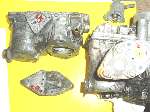
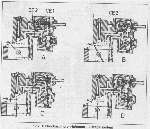
32DIS of Renault 18
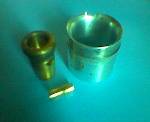
The actual Renault Group A venturi parts
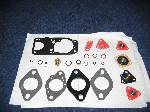
Webcon service kit straight from the box
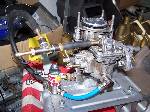
Ave's extra enrichment
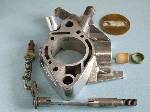
Ian S carb base; knarley bits removed, polished a bit, spindle thinned
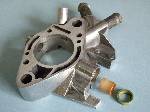
The plastic insert and green seal
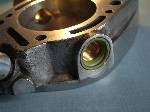
The other green seal
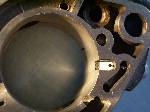
Idle fine adjustment holes. Mixture screw and petrol goes through the larger one and air through the smaller
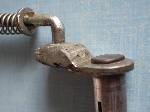
Repaired hinge 1
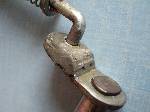
Repaired hinge 2
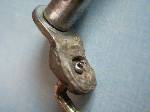
Repaired hinge 3
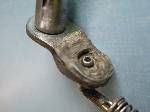
Repaired hinge 4. done with plastic padding. I kept the broken plastic bush in there and bodged the padding over and around it
|




















 Reply With Quote
Reply With Quote